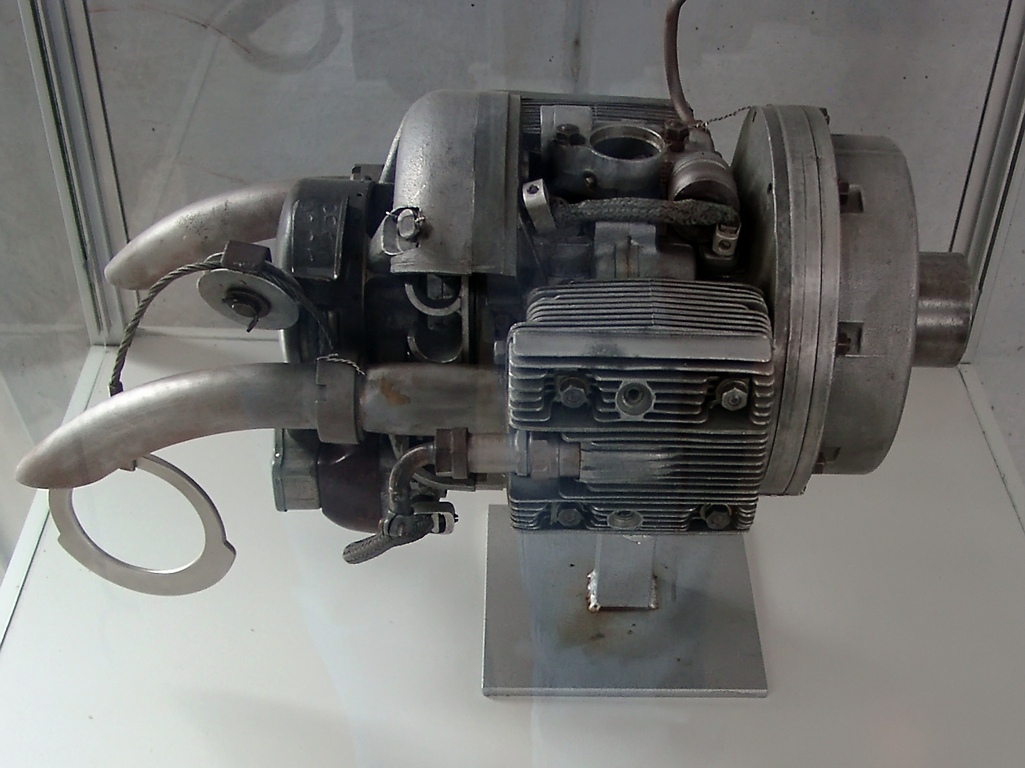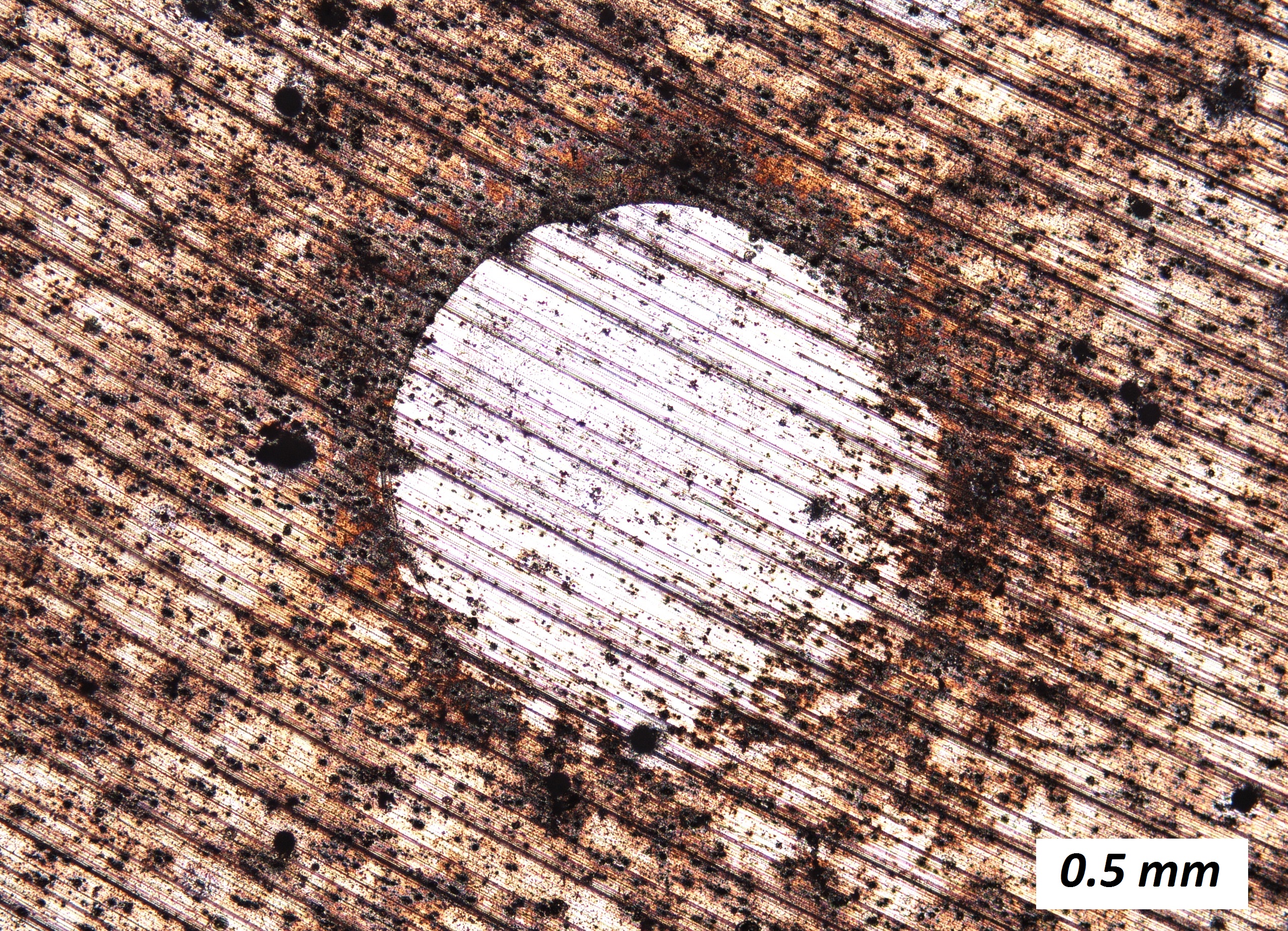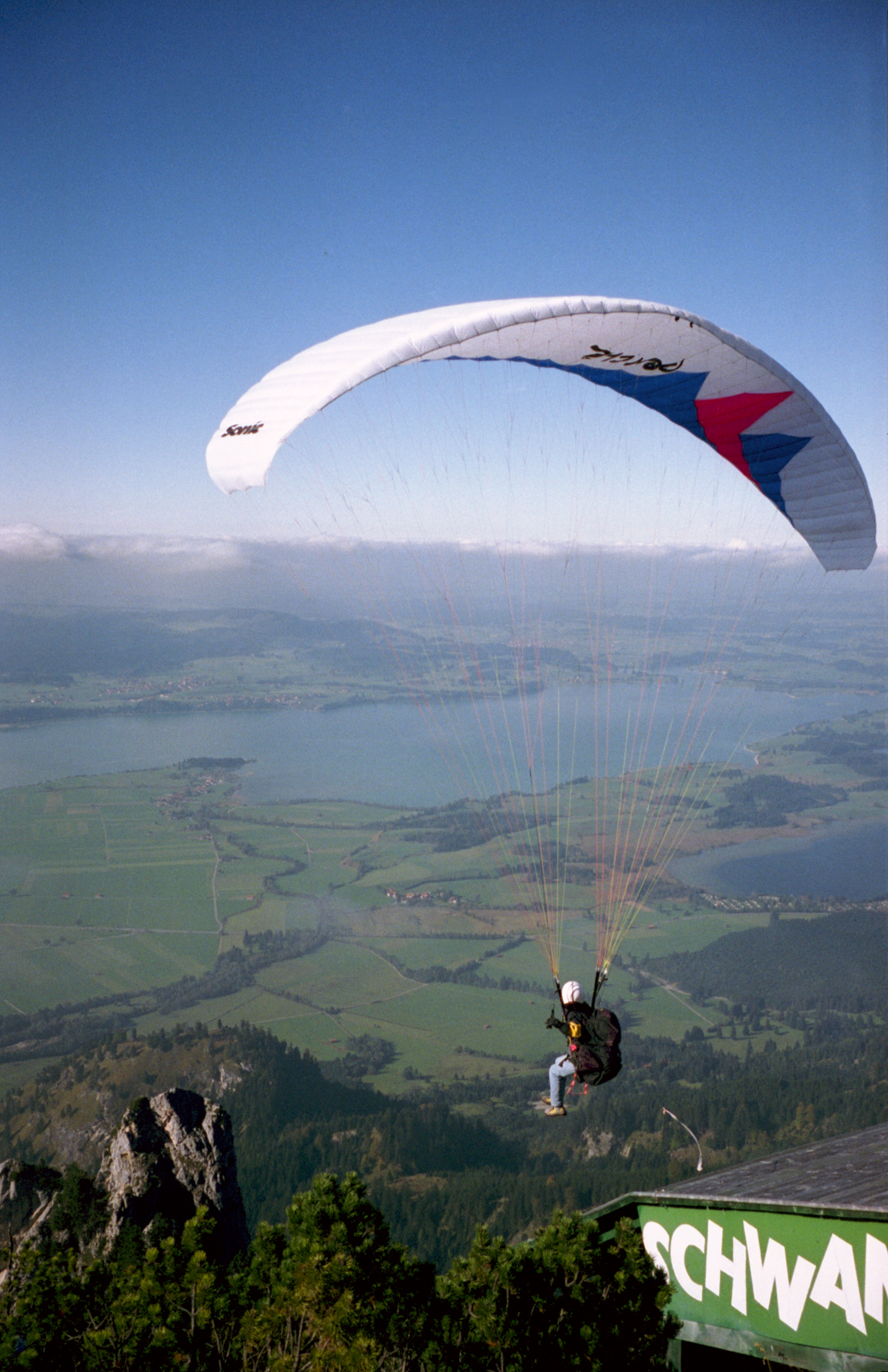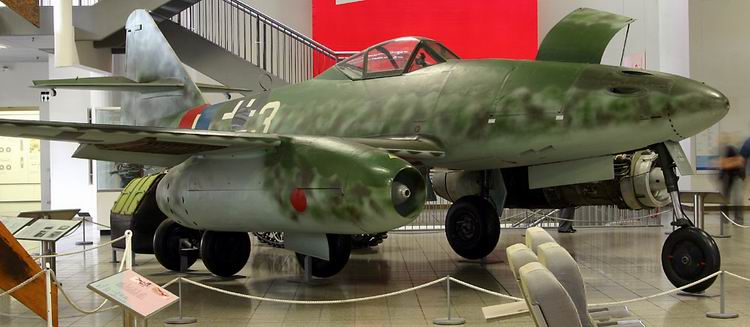|
Alekseyev I-21
The Alekseyev I-21 was a Soviet twin-engined jet fighter, built in the late 1940s. Two prototypes were constructed with the designation of I-211, of which one was converted into the I-215 with more powerful engines. A third aircraft was built to evaluate the bicycle landing gear arrangement for use in other aircraft. The fighter was not accepted for production as it was inferior to the swept-wing fighters like the Mikoyan-Gurevich MiG-15. Development After working as Lavochkin's right-hand man during World War II, Semyon Alekseyev was appointed as Chief Designer of OKB-21 (design bureau) at Gor'kiy. The Council of the People's Commissars directed Alekseyev and other designers to develop jet fighters using more powerful engines than the captured German Jumo 004 and the BMW 003 and their Soviet-built copies. The result of Alekseyev's efforts was the I-21 (Russian: ''istrebitel'' (fighter)), which was planned to be produced in several variants.Gordon & Kommissarov 2014, pp. 40 ... [...More Info...] [...Related Items...] OR: [Wikipedia] [Google] [Baidu] |
WikiProject Aircraft
A WikiProject, or Wikiproject, is a Wikimedia movement affinity group for contributors with shared goals. WikiProjects are prevalent within the largest wiki, Wikipedia, and exist to varying degrees within sister projects such as Wiktionary, Wikiquote, Wikidata, and Wikisource. They also exist in different languages, and translation of articles is a form of their collaboration. During the COVID-19 pandemic, CBS News noted the role of Wikipedia's WikiProject Medicine in maintaining the accuracy of articles related to the disease. Another WikiProject that has drawn attention is WikiProject Women Scientists, which was profiled by '' Smithsonian'' for its efforts to improve coverage of women scientists which the profile noted had "helped increase the number of female scientists on Wikipedia from around 1,600 to over 5,000". On Wikipedia Some Wikipedia WikiProjects are substantial enough to engage in cooperative activities with outside organizations relevant to the field at issue. For e ... [...More Info...] [...Related Items...] OR: [Wikipedia] [Google] [Baidu] |
Jumo 004
The Junkers Jumo 004 was the world's first production turbojet engine in operational use, and the first successful axial compressor turbojet engine. Some 8,000 units were manufactured by Junkers in Germany late in World War II, powering the Messerschmitt Me 262 fighter and the Arado Ar 234 reconnaissance/bomber, along with prototypes, including the Horten Ho 229. Variants and copies of the engine were produced in Eastern Europe and the USSR for several years following the end of WWII. Design and development The feasibility of jet propulsion had been demonstrated in Germany in early 1937 by Hans von Ohain working with the Heinkel company. Most of the Reich Air Ministry (Reich Air Ministry, RLM) remained uninterested, but Helmut Schelp and Hans Mauch saw the potential of the concept and encouraged Germany's aero engine manufacturers to begin their own programmes of jet engine development. The companies remained skeptical and little new development was carried out. In 1939 Schelp a ... [...More Info...] [...Related Items...] OR: [Wikipedia] [Google] [Baidu] |
Magnesium
Magnesium is a chemical element with the symbol Mg and atomic number 12. It is a shiny gray metal having a low density, low melting point and high chemical reactivity. Like the other alkaline earth metals (group 2 of the periodic table) it occurs naturally only in combination with other elements and it almost always has an oxidation state of +2. It reacts readily with air to form a thin passivation coating of magnesium oxide that inhibits further corrosion of the metal. The free metal burns with a brilliant-white light. The metal is obtained mainly by electrolysis of magnesium salts obtained from brine. It is less dense than aluminium and is used primarily as a component in strong and lightweight alloys that contain aluminium. In the cosmos, magnesium is produced in large, aging stars by the sequential addition of three helium nuclei to a carbon nucleus. When such stars explode as supernovas, much of the magnesium is expelled into the interstellar medium where it ma ... [...More Info...] [...Related Items...] OR: [Wikipedia] [Google] [Baidu] |
Duralumin
Duralumin (also called duraluminum, duraluminium, duralum, dural(l)ium, or dural) is a trade name for one of the earliest types of age-hardenable aluminium alloys. The term is a combination of '' Dürener'' and ''aluminium''. Its use as a trade name is obsolete. Today the term mainly refers to aluminium–copper alloys, designated as the 2000 series by the international alloy designation system (IADS), as with 2014 and 2024 alloys used in airframe fabrication. History Duralumin was developed by the German metallurgist Alfred Wilm at Dürener Metallwerke AG. In 1903, Wilm discovered that after quenching, an aluminium alloy containing 4% copper would harden when left at room temperature for several days. Further improvements led to the introduction of duralumin in 1909. The name is mainly used in pop-science to describe all Al-Cu alloys system, or '2000' series, as designated through the international alloy designation system originally created in 1970 by the Aluminum A ... [...More Info...] [...Related Items...] OR: [Wikipedia] [Google] [Baidu] |
Dihedral (aircraft)
In aeronautics, dihedral is the angle between the left and right wings (or tail surfaces) of an aircraft. "Dihedral" is also used to describe the effect of sideslip on the rolling of the aircraft. Dihedral angle is the upward angle from horizontal of the wings or tailplane of a fixed-wing aircraft. "Anhedral angle" is the name given to negative dihedral angle, that is, when there is a ''downward'' angle from horizontal of the wings or tailplane of a fixed-wing aircraft. Dihedral angle has a strong influence on dihedral effect, which is named after it. Dihedral effect is the amount of roll moment produced in proportion to the amount of sideslip. Dihedral effect is a critical factor in the stability of an aircraft about the roll axis (the spiral mode). It is also pertinent to the nature of an aircraft's Dutch roll oscillation and to maneuverability about the roll axis. Longitudinal dihedral is a comparatively obscure term related to the pitch axis of an airplane. It ... [...More Info...] [...Related Items...] OR: [Wikipedia] [Google] [Baidu] |
Drop Tank
In aviation, a drop tank (external tank, wing tank or belly tank) is used to describe auxiliary fuel tanks externally carried by aircraft. A drop tank is expendable and often capable of being jettisoned. External tanks are commonplace on modern military aircraft and occasionally found in civilian ones, although the latter are less likely to be discarded except in an emergency. Overview The primary disadvantage with drop tanks is that they impose a drag penalty on the aircraft. External fuel tanks will also increase the moment of inertia, thereby reducing roll rates for air maneuvers. Some of the drop tank's fuel is used to overcome the added drag and weight of the tank. Drag in this sense varies with the square of the aircraft's speed. The use of drop tanks also reduces the number of external hardpoints available for weapons, reduces the weapon-carrying capacity and increases the aircraft's radar signature. Usually the fuel in the drop tanks is consumed first, and only when a ... [...More Info...] [...Related Items...] OR: [Wikipedia] [Google] [Baidu] |
Hardpoint
A hardpoint is an attachment location on a structural frame designed to transfer force and carry an external or internal load. The term is usually used to refer to the mounting points (more formally known as a weapon station or station) on the airframe of military aircrafts that carry weapons (e.g. gun pods and rocket pods), ordnances (bombs and missiles) and support equipments (e.g. flares and countermeasures, targeting pods or drop tanks), and also include hardpoints (also known as pylons) on the wings or fuselage of a military transport aircraft, commercial airliner or private jet where external turbofan jet engines are often mounted. Aircraft In aeronautics, the term ''station'' is used to refer to a point of carriage on the frame of an aircraft. A station is usually rated to carry a certain amount of payload. It is a design number which already has taken the rated g-forces of the frame into account. Therefore, point loads on the structure from externally or internally mo ... [...More Info...] [...Related Items...] OR: [Wikipedia] [Google] [Baidu] |
Nacelle
A nacelle ( ) is a "streamlined body, sized according to what it contains", such as an engine, fuel, or equipment on an aircraft. When attached by a pylon entirely outside the airframe, it is sometimes called a pod, in which case it is attached with a pylon or strut and the engine is known as a podded engine. In some cases—for instance in the typical "Farman" type "pusher" aircraft, or the World War II-era P-38 Lightning—an aircraft cockpit may also be housed in a nacelle, rather than in a conventional fuselage. Etymology Like many aviation terms, the word comes from French, in this case from a word for a small boat. Development The development of the Arado Ar 234, merging the four nacelles into two The Arado Ar 234 was one of the first operational jet aircraft with engines mounted in nacelles. During its development, the four jet engines were merged from having four distinct nacelles, all of which contained their own landing gear wheel, to two nacelles with two engi ... [...More Info...] [...Related Items...] OR: [Wikipedia] [Google] [Baidu] |
Messerschmitt Me 262
The Messerschmitt Me 262, nicknamed ''Schwalbe'' (German: "Swallow") in fighter versions, or ''Sturmvogel'' (German: "Storm Bird") in fighter-bomber versions, is a fighter aircraft and fighter-bomber that was designed and produced by the German aircraft manufacturer Messerschmitt. It was the world's first operational jet-powered fighter aircraft. The initial design of what would become the Me 262 started in April 1939, prior to the start of the Second World War. While the aircraft performed its maiden flight on 18 April 1941, this was using piston engine instead of jet propulsion; it was not until 18 July 1942 that the first jet-powered flight was performed. Progress on the project was delayed by problems with engines, metallurgy and top-level interference from figures such as Hermann Göring, head of the Luftwaffe, and Adolf Hitler. The latter advocated from the Me 262 to be operated as a ground-attack/bomber aircraft rather than a defensive interceptor, thus necessitating a ... [...More Info...] [...Related Items...] OR: [Wikipedia] [Google] [Baidu] |
Turbojet
The turbojet is an airbreathing jet engine which is typically used in aircraft. It consists of a gas turbine with a propelling nozzle. The gas turbine has an air inlet which includes inlet guide vanes, a compressor, a combustion chamber, and a turbine (that drives the compressor). The compressed air from the compressor is heated by burning fuel in the combustion chamber and then allowed to expand through the turbine. The turbine exhaust is then expanded in the propelling nozzle where it is accelerated to high speed to provide thrust. Two engineers, Frank Whittle in the United Kingdom and Hans von Ohain in Germany, developed the concept independently into practical engines during the late 1930s. Turbojets have poor efficiency at low vehicle speeds, which limits their usefulness in vehicles other than aircraft. Turbojet engines have been used in isolated cases to power vehicles other than aircraft, typically for attempts on land speed records. Where vehicles are "turbine-powere ... [...More Info...] [...Related Items...] OR: [Wikipedia] [Google] [Baidu] |
Lyul'ka TR-2
Lyulka was a USSR aero engine design bureau and manufacturer from 1938 to the 1990s, when manufacturing and design elements were integrated as NPO Saturn based at Rybinsk. The Lyulka design bureau had its roots in the "Kharkiv Aviation Institute" ( Ukrainian SSR ) where Arkhip Mikhailovich Lyulka Arkhip Mikhailovich Lyul'ka (''Russian'': Архи́п Миха́йлович Лю́лька, ''Ukrainian'': Архип Михайлович Люлька) (1908–1984) was a Soviet scientist and designer of jet engines, head of the OKB Lyulka, ... was working with a team designing the ''ATsN'' (Agregat Tsentralnovo Nadduva - Centralised supercharger) installation on the Petlyakov Pe-8 bomber. Lyul'ka was responsible for designing the first Soviet gas turbine engines. Preferring to steer away from copying captured German equipment, it succeeded in producing home grown engines. Engines References * Gunston, Bill. “The Osprey Encyclopaedia of Russian Aircraft 1875–1995”. Lon ... [...More Info...] [...Related Items...] OR: [Wikipedia] [Google] [Baidu] |
Arkhip Mikhailovich Lyulka
Arkhip Mikhailovich Lyul'ka (''Russian'': Архи́п Миха́йлович Лю́лька, ''Ukrainian'': Архип Михайлович Люлька) (1908–1984) was a Soviet scientist and designer of jet engines, head of the OKB Lyulka, member of the USSR Academy of Sciences. Biography Arkhip Lyul'ka was born on 23 March 1908, in Savarka village in the Kiev Governorate of Russian Empire (today Savarka, Kyiv Oblast, Ukraine). He was educated in the Savarka village school and graduated from the Kiev Polytechnic Institute in 1931 (Mikhail Kravchuk was his teacher and mentor in both institutions). He then worked for two years in the Kharkov turbogen factory. Lyul'ka was a USSR aero-engine design bureau and manufacturer from 1938 to the 1990s when manufacturing and design elements were integrated as NPO Saturn based at Rybinsk. The Lyul'ka design bureau had its roots in the Kharkiv Aviation Institute (Ukrainian SSR) where Arkhip M. Lyul'ka was working with a team designi ... [...More Info...] [...Related Items...] OR: [Wikipedia] [Google] [Baidu] |







